Walk leader, and BioBlitz specialist, La Monte Yarroll with assistance from Adam Haritan and Jim Tunney. There were two walks at Phipp’s BioBlitz, one in the morning rain, and one in the afternoon.
Species list entered by La Monte Yarroll.
List of species found on the walk at Phipp’s BioBlitz 2016:
[icon style=”camera”] Agrocybe pediades (Hemispheric Agrocybe),
[icon style=”camera”] Arcyria denudata (Pink Carnival Candy Slime),
[icon style=”camera”] Armillaria mellea (Honey Mushroom),
[icon style=”camera”] Boletus chrysenteron (Red-Cracked Bolete),
[icon style=”camera”] Ceratiomyxa fruticulosa (Coral Slime),
[icon style=”camera”] Clavaria vermicularis (White Worm Coral Fungus),
[icon style=”camera”] Conocybe lactea (White Dunce Cap),
[icon style=”camera”] Coprinellus micaceus (Mica Cap),
[icon style=”camera”] Diatrype stigma (),
[icon style=”camera”] Hemitrichia calyculata (),
[icon style=”camera”] Hericium erinaceus (Bearded Tooth),
[icon style=”camera”] Inocybe rimosa (),
[icon style=”camera”] Lentinellus ursinus (),
[icon style=”camera”] Lycogala epidendrum (Wolf’s Milk Slime),
[icon style=”camera”] Marasmius pyrrhocephalus (),
[icon style=”camera”] Marasmius rotula (Pinwheel Marasmius),
[icon style=”camera”] Mycena haematopus (Bleeding Mycena),
[icon style=”camera”] Mycena leaiana (Orange Mycena),
[icon style=”camera”] Panaeolus foenisecii (),
[icon style=”camera”] Parasola plicatilis (),
[icon style=”camera”] Perenniporia subacida (),
[icon style=”camera”] Pleurocybella porrigens (Angel-wing Mushroom),
[icon style=”camera”] Pleurotus ostreatus (Oyster Mushroom),
[icon style=”camera”] Polyporus squamosus (Dryad’s Saddle, Pheasant Polypore),
[icon style=”camera”] Schizophyllum commune (Split Gill),
[icon style=”camera”] Scutellinia scutellata (Reddish Eyelash Cup),
[icon style=”camera”] Stemonitis axifera (),
[icon style=”camera”] Stereum complicatum (Crowded Parchment),
[icon style=”camera”] Stereum ostrea (False Turkey-tail),
[icon style=”camera”] Trametes hirsuta (),
[icon style=”camera”] Ustulina deusta (Carbon Cushion),
[icon style=”camera”] Xylaria polymorpha (Dead Man’s Fingers)
Comments:
There was a red-staining Agaricus that is been investigated by Jim Tunney. A. mellea was rhizomorphs, not fruiting bodies. The identity of Stemonitis axifera was confirmed under the microscope—it had smooth spores.
All photos by Adam Haritan
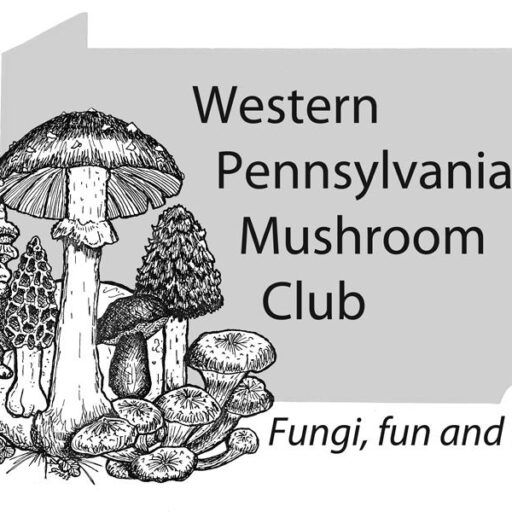
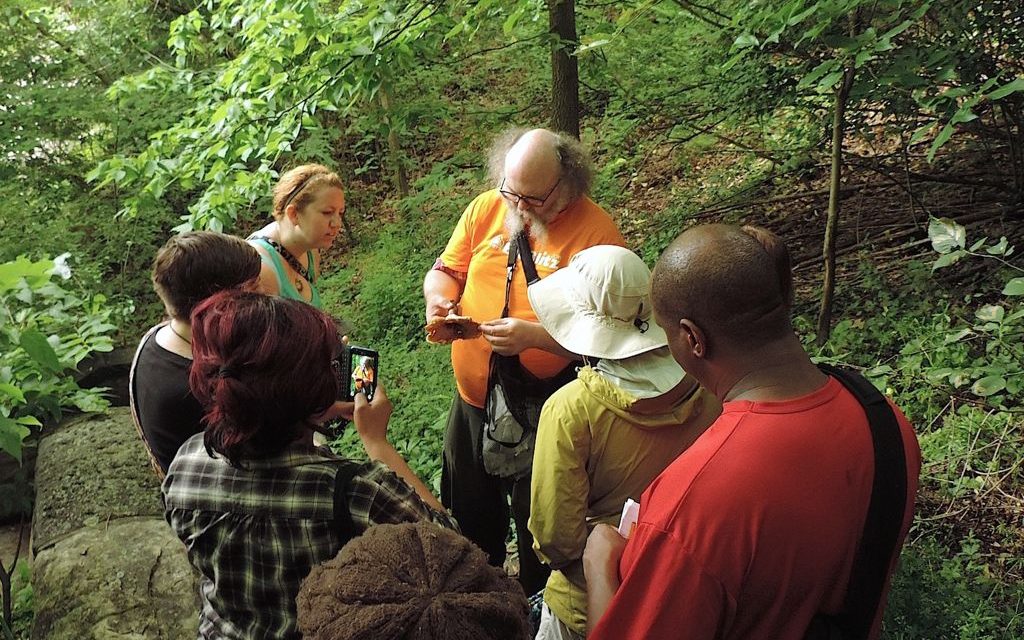






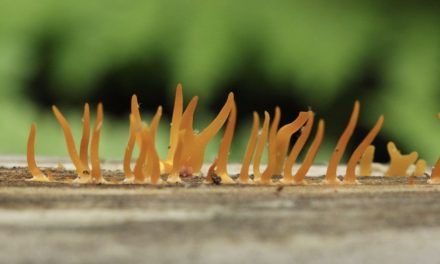
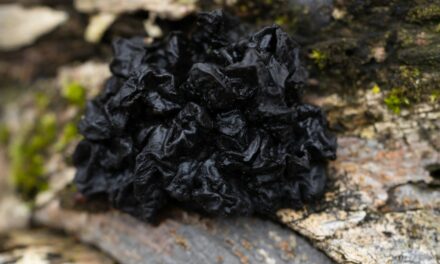
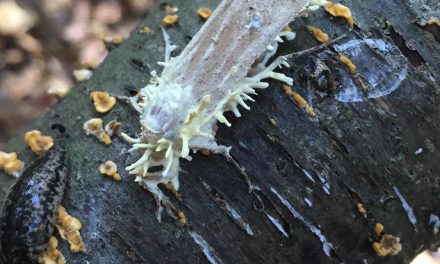
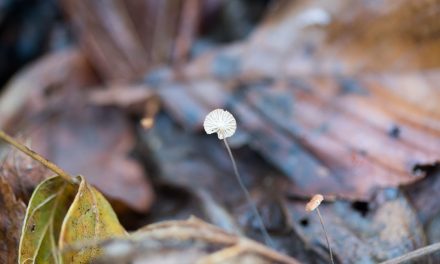

What is the name for the mushroom that is called “Sheep’s Head”. My dad used to hunt these and are usually found at the base if oak trees. Would love to be able to find these on my own.
Sheep’s Head is also know as Hen of the Woods is Grifola frondosa. You can typically find them at the base of oak trees in September and October as well as a few earlier or later. The reported incidence is about 1 in 100 trees.